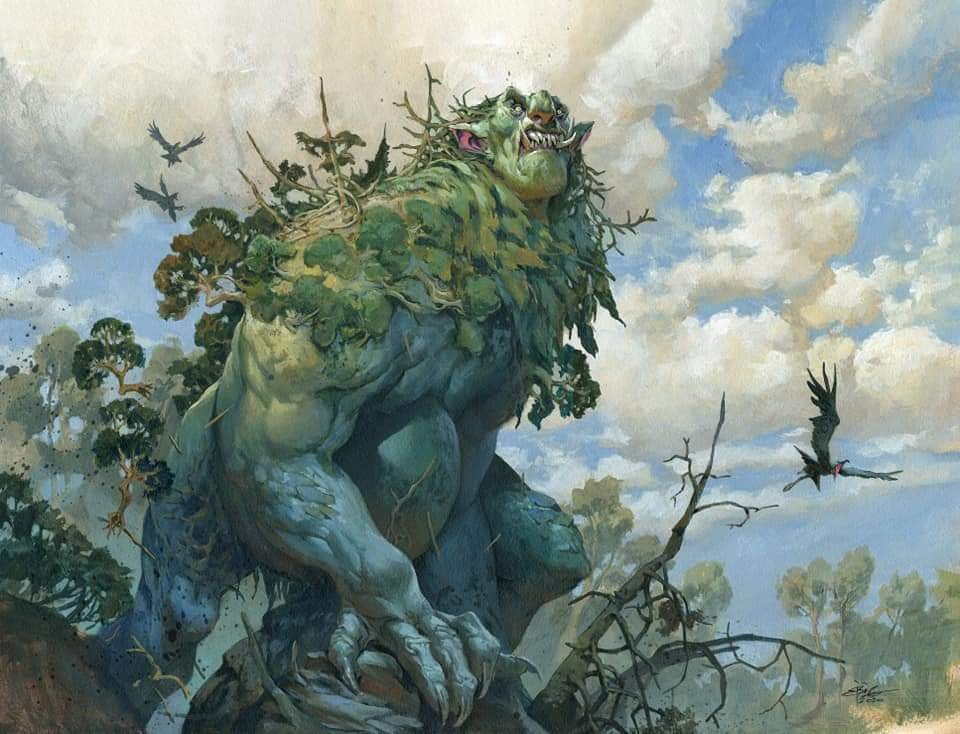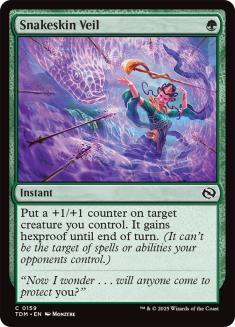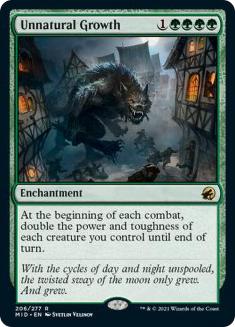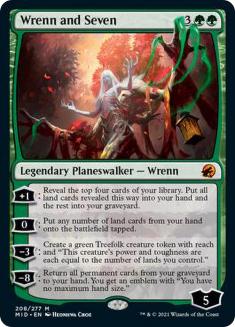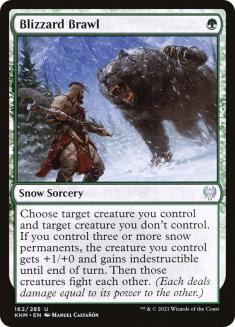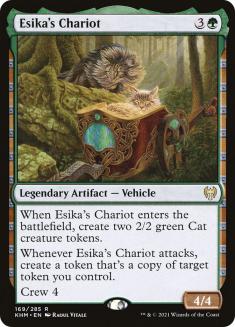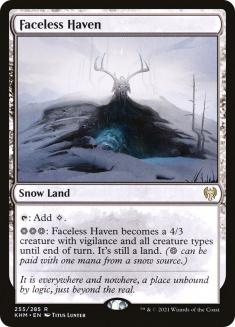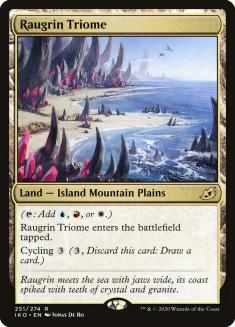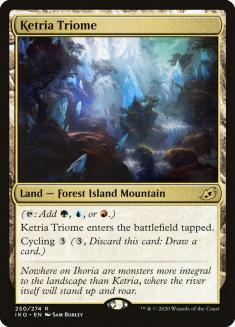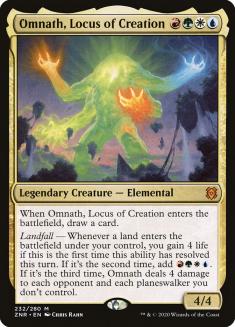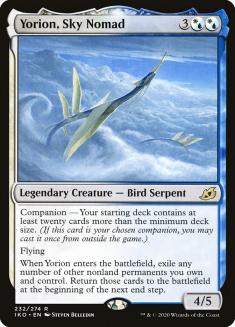This weekend, as I’m sure you’re aware, is the SCG Invitational at SCG CON. Today’s article will outline my two decks for the event, one Standard and one Modern. Before we begin, I just want to say that split-format tournaments are some of the most fun events I’ve had the pleasure of playing, and SCG CON is always a great time. If you can come out, you definitely should. Even if you’re not qualified for the main event, there are a ton of side events to join. This will be my first event post-COVID, so I’m pretty excited to actually play live Magic again, even if that means forgetting to reveal my companion a few times.
My decks for the tournament are as follows:
- Standard: Mono-Green Aggro❄
- Modern: Four-Color Crashcade (Yorion)
Standard
“There are no wrong threats, only wrong answers.”
– Michael J. Flores
I got my ass kicked by aggro decks over the last few weeks trying all manner of Izzet, and I’ve found that the part that matters most when playing control is choosing the right build. I don’t want to play the wrong removal spell or threat and get battered. Most decks are molding themselves to beat Mono-Green, which means it must be doing something right. I have more experience with Izzet in this Standard meta, but I’m hoping it says something about my opinion of the matchup if I abandon my baby Smoldering Egg and pick up Blizzard Brawl.
Control decks are often left at risk when you construct them to fight the wrong types of opponents. If you don’t play Disdainful Stroke and/or Negate in the current build, you’re just begging to get pounded by the mirror. If you go harder on removal, you’ll have plenty of dead cards against other Alrund’s Epiphany decks. It’s a delicate balance to maintain, and even if you make all the correct decisions you can still lose, so I’ve just decided to throw the deck out the window in favor of the most consistent and straightforward aggro deck I’ve ever seen.
Creatures (16)
Planeswalkers (3)
Lands (24)
Spells (17)

I’m waffling on three or four Snakeskin Veil, but I know I want more than two. It’s just too strong against Izzet in all forms. There’s a reason everyone runs four between maindeck and sideboard. Obviously loading up on that effect is loose for the mirror or Mono-White, but it still has applications there against spot removal and can steal some combats in a pinch. But let’s be real, it’s a complete disaster for Izzet, and I think more people will be playing Izzet than any other archetype.
Unnatural Growth is only good in the mirror, so I’m leaving it in the sideboard for now. It does one hell of a job of casting Overrun every turn, but that has never been good against control decks or little kid aggro. It’s more of a “break the battlefield stall,” but it does that with flying colors. Five mana is a lot to ask for an effect like that, but it’s worth it for the mirror, and the mirror only.
Wrenn and Seven is one of your better threats in the later turns, but a widespread adoption of Fading Hope has made it significantly worse. If we load up on Snakeskin Veil, we might be able to protect our token from it, but the fact that it is the most vulnerable part of our deck means it might not be worth loading up on the expensive planeswalker. I’m currently in consideration for cutting it completely for Primal Adversary, giving us a little more early-game pressure but also to have a significant, scaling impact as the game progresses.
I think Mono-Green Aggro❄ contains some of the best cards in Standard. Not only are there efficient threats, it contains cheap removal and an absurd mid-game. For an aggro deck to get something as efficient as Blizzard Brawl is unheard of. In this Standard format, Blizzard Brawl is an absolute beating, often clearing your opponent’s lone blocker while your undercosted threats rumble in uncontested. Green decks are often vulnerable to opposing creature decks because they don’t often have cheap removal. While there is the clause of controlling a creature and playing snow lands, Blizzard Brawl is probably the best removal spell we’ve seen in Standard since Fatal Push. Not every deck can play it, but the one that can play it uses it like Swords to Plowshares.
If we’re talking about banning Alrund’s Epiphany, you would be wise to consider a co-ban of Esika’s Chariot. It produces so much power for so little mana, and continues to generate pressure even in the face of sweepers. I’ve seen battlefields completely reset from a single Esika’s Chariot after getting decimated, and often watch people flounder in the face of such ruthless efficiency.
While any monocolored aggro deck can play Faceless Haven, playing any aggro deck in Standard means you can likely get this one in the mix. Sweepers are a bit on the decline, which is where Faceless Haven shines, but it’s still one of the most aggressively costed creature-lands to see print. If the choice were between it and Mutavault, I don’t know which one I would pick.
Final Thoughts on Mono-Green
- It’s more forgiving.
I haven’t played live Magic in a long time, so I’m probably going to be a little rusty. Making things a little easier on myself is probably a good idea. While playing aggro isn’t “easy,” the sheer amount of sequencing decisions you have to make with Izzet can be a little taxing on a long day.
- Let people warp their deck.
When other people are altering their builds to beat you, you’re doing something right. I’ve also just seen so many Izzet decks fall in the face of Mono-Green, even while doing their best to tech against them. If you play sharp and bring the right tools, I believe Izzet in most forms is a good matchup.
- Play the most powerful cards in the format.
Outside of Alrund’s Epiphany, I think Mono-Green Aggro❄ has all the other best cards in the format. The ones highlighted above are absurd, and should influence Standard for at least the next nine months or so. The only reason people are playing Alrund’s Epiphany in the first place is because the prospect of beating Esika’s Chariot in a fair way is laughable. Esika’s Chariot specifically has started to make a broader impact in some older formats, leading me to believe it’s the best card in Standard, or maybe second just slightly behind Alrund’s Epiphany.
- Lier, Disciple of the Drowned is your worst nightmare.
Lier, Disciple of the Drowned is the best card in the format against Mono-Green Aggro❄. We don’t have interaction that doesn’t come with an asterisk, so it’s pretty difficult to beat a resolved Lier with Fading Hope at the ready. The most competent players in the room will be playing Lier in their Izzet decks, but I don’t think its enough to sway the matchup in their favor. You need to be aware of it, and you need to do your best to mitigate the lasting effects of it. If your opponent is able to resolve Lier and untap with it, you’ve lost.
Modern
The other format at the Invitational is Modern. In the last few weeks, I’ve gotten stuck on Crashcade, a deck that uses various cascade spells to play Crashing Footfalls for pretty cheap. Unlike the other cascade decks in the format, you don’t have to jump through any hoops to play Crashing Footfalls. The rest of your deck can be geared to interact with your opponent via removal, counterspells, or other means. The only caveat is that you must restrict yourself to cards with mana value three or greater. Luckily, Modern is chock-full of cards that can get around that contract.
The build I will be playing is quite a bit different than the Temur versions that have been running around. I detailed a bunch of tips and ticks for Temur Crashcade last week, and you can find it below.
Let’s take a look at the new version and break down the most important additions.
Creatures (20)
Planeswalkers (5)
Lands (28)
Spells (27)
- 1 Forest
- 1 Plains
- 1 Mountain
- 1 Island
- 4 Violent Outburst
- 4 Ardent Plea
- 4 Fire
- 4 Force of Negation
- 4 Crashing Footfalls
- 3 Prismari Command
Sideboard

Adding a Color
Adding another color to your deck opens up all sorts of options. Normally it would be detrimental to your early development, either costing you tapped lands or dealing you excess damage. However, thanks to our mana value contract, we’re already built around two of the best lands that Modern has to offer.
These two lands turn all your fetchlands into perfect mana producers. Since you aren’t playing many one-mana effects, starting with one of these is the norm. It becomes much easier to splash a color when your first land taps for three different colors and helps pair with whatever your other lands in hand are to cast all your spells on time. Without the Triomes, we’d likely be dealing ourselves too much damage or be spread a little too thin to play a fourth color. As it stands, playing four colors is extremely easy.
Did people forget about Teferi, Time Raveler in Modern? With everyone playing fair and cascade variants running rampant, Teferi, Time Raveler will be your best friend. It dominates mirrors and replaces itself. There’s a reason it’s banned in all the formats below Modern, including both Historic and Pioneer.
It also offers protection for counterspells. We’re playing some expensive cards, and having them get blasted with Counterspell or Force of Negation can be a blowout. Teferi, Time Raveler can protect us from that and does so much more.
The other major reason to play white is Solitude, a removal spell that doubles as a threat. Since we’re “splashing” white, you might think we don’t have enough white cards to pitch. You’d be wrong. The ones we are adding to the maindeck are almost sufficient by themselves, but the real kicker is getting to play Yorion, Sky Nomad. That extra white card gives us the ability to turn Solitude from “free” to costing three mana, essentially turning it into a variable-cost removal spell.
Solitude is another card on our list of free things that get around the mana value contract, making our early turns a little less painful when our opponents are trying to attack us. Alongside Fury, we have most creatures covered, buying us enough time to resolve Crashing Footfalls or other game-breaking spells in the later turns.
Omnath, Locus of Creation is one of the most disgusting cards ever created, and also happens to be the four colors to cast any of our free pitch spells. Omnath costs four mana, which is not cheap for Modern, but it’s absolutely worth the investment. In some matchups, it’s too slow, but being all the colors of our deck allows it to be pitched to anything, which also happens to reduce the downside of being a legendary creature.
Omnath, Locus of Creation also shines with fetchlands, which we have huge incentive to play thanks to our Triome starts. That burst of mana on the fifth turn gives us the ability to hard cast Fury or Solitude, but it can also create some landslide sequences involving Yorion, Sky Nomad.
Eighty Is the New Sixty
When companions first appeared, Yorion was one of the most dominant cards in Magic. Since the nerf made them cost three mana to add to your hand, they all got significantly worse, but both Yorion and Lurrus are still pretty good. With that said, this is one of the worst “Yorion” decks you could ask for, but it’s still good enough.
We don’t have many blink targets, so adding twenty cards might feel like a huge spew. However, the most important cards in the Crashcade deck are usually the ones that cast Crashing Footfalls. I noticed at some point that a 60-card version that played twelve cascade cards was too one-dimensional, making you more vulnerable to hate like Chalice of the Void. With 80 cards, adding four more cascade cards (up from eight to twelve) means we’re hitting slightly more often than the Temur version at 60 cards. The additional color gives us some more powerful tools, which we’ve already discussed, but the main draw is that the additional cascade spells make adding twenty cards free. Therefore, Yorion is free, and now we just have to find ways to use it.
Force of Negation and Solitude will be the most common uses for Yorion, as it is expensive and just kinda acts like a textless Azorius card most of the time. However, in a situation where the game has gone long, any hard-cast Fury or Solitude is a big game. Even blinking Omnath can net you an additional card, which can make all the difference in a grindy game. Regardless, since the Yorion is free, and the white splash adds another dimension to the deck, it makes the prospect of pinpoint attack on our vulnerabilities something of a joke.
Finals Thoughts Before SCG CON
I really like both my decks for the Invitational. If you’re playing either Standard or Modern this weekend, you could do a lot worse than either of these choices. I’m particularly fond of the Four-Color Crashcade deck, but Snakeskin Veil has me feeling things I haven’t felt in a long time.
Standard is somewhat solved, with the major players opting for two- to four-slot changes for various matchups. The games are pretty fun, regardless of what decks people are playing or who is winning. Modern is more diverse now than it was before Modern Horizons 2 was released, with two of my favorite streamers, aspiringspike and d00mwake, leading the way on what the current metagame looks like. Without their ideas, half the decks in the format might not exist. It’s no wonder that they both made the finals of the Modern Challenge this past weekend!
I’d be lying if I said I wasn’t nervous, both because I will be shoulder to shoulder with a bunch of other humans, but also because the stakes are higher than I’ve played in quite a while. I’m very lucky that the tournament is happening in my hometown, which means I get to sleep in my own bed and eat at Waffle House before things begin. I’m lucky enough to get to see some old friends, which I’m eternally grateful for. It’s been a long two years, but I’m very excited to be slinging some actual-factual cardboard.
See y’all there!

